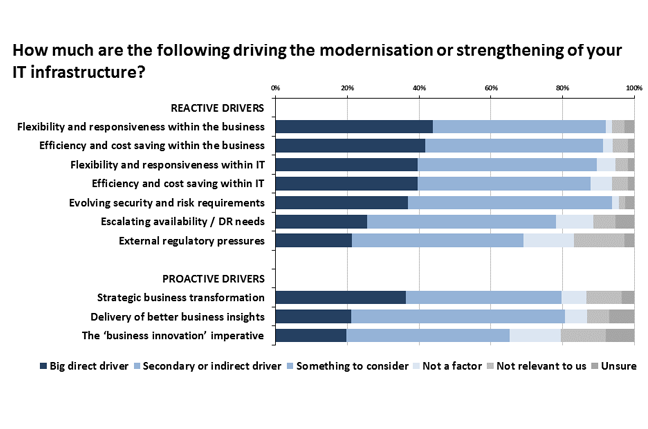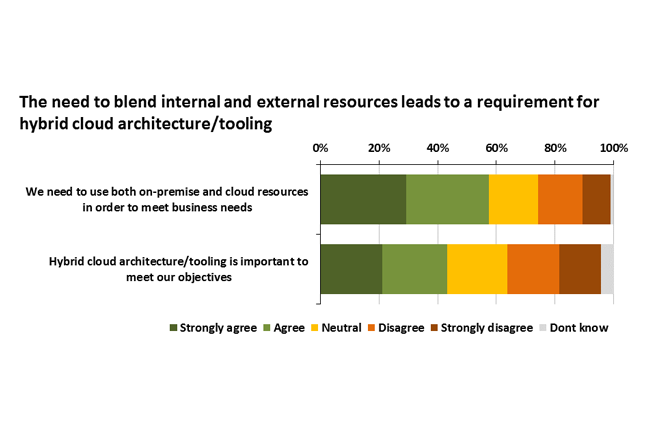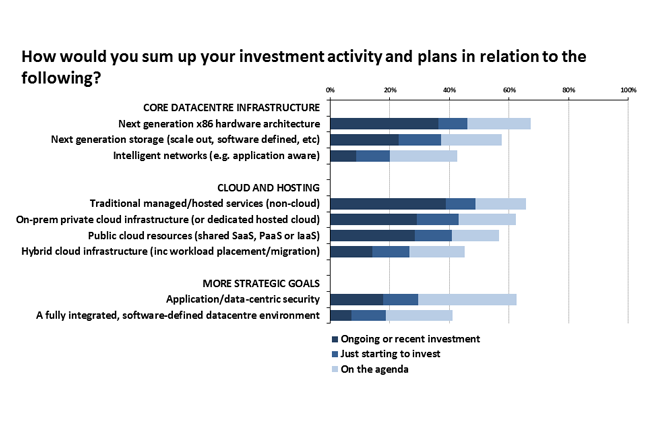This article is more than 1 year old
Infrastructure Readiness? It's time to get realistic
How future proof are your IT systems?
It’s all about change friendliness
For some businesses, the motivation to modernise and strengthen the infrastructure is associated with some kind of strategic business transformation imperative or other proactive driver. However, the desire for greater flexibility and responsiveness comes through very strongly from the survey – i.e. an ability to react quickly when the need arises (Figure 3).

This drive for greater agility sometimes stems from within the business, and sometimes from within IT. Either way, in an increasingly fast-moving and rapidly shifting world, the need for a change friendly environment is clear, though obviously not at the expense of efficiency and effective risk management.
This reinforces the logic described above of replacing older, more rigid core infrastructure where necessary, but also highlights the need for some new ways of doing things. The hybrid cloud approach is an obvious example here (Figure 4).

One of the other imperatives called out in a similar way (by just over 40 per cent of survey respondents) is adoption of DevOps, which from a software development and deployment prospective can enable more continuous, efficient and robust delivery.
In recognition of the fact that we are all now working in a hyper-connected world, in which many threats exist, over half also say that evolving security requirements are more directly driving investments within their organisation. As ever, security remains a high priority.
The new investment agenda
Many are already making or planning investments that will naturally introduce a greater level of agility and efficiency into their infrastructure, though relatively few are consciously aiming to create the nirvana of a fully integrated, software-defined datacentre environment. For the majority this is more of a general direction of travel than an explicit objective (Figure 5).

The chart we see here doesn’t cover all of the options, and there are certainly other types of investment that you might already be considering as you look to future-proof your own infrastructure. Converged and hyper-converged infrastructure solutions are examples here, as are software environments to deal with evolving desktop and mobile needs in the end user computing context.
The bottom line
The main takeaway from this latest temperature check survey is that the way demands on the IT infrastructure are evolving mean you need to think carefully about the investments you are making. It’s not just about routine expansion of compute, storage and network capacity, but introducing more change-friendly and therefore future proof architectures, solutions and delivery models. But the survey also tells us that beyond the need for efficiency, flexibility and responsiveness, every organisation has a unique set of requirements and constraints.
As ever, it remains critical to develop and follow your own agenda and maintain an open and inclusive mind-set, ignoring vendors who try to tell you that there is a single answer to every challenge. The metaphorical conveyor belt with the new coming in at one end and the old dropping off at the other is a long one. Coexistence of the traditional with the modern will remain a requirement, no matter how much emerging ideas yet again promise to change everything. But that, of course, is one of the things that makes IT so interesting and keeps all of us in our jobs. ®
Watch How future-proof are your IT systems?
